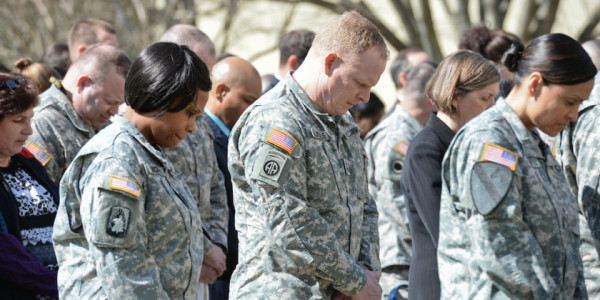

The military’s recently released sexual assault report showed that an estimated 14,900 service members were sexually assaulted in 2016, a rate of more than 40 every day.
The military conducts regular surveys on sexual assault in the armed forces, and this latest report bears some encouraging signs.
In 2016, the total number of sexual assaults in the military declined by more than 5,000, reaching a 10-year low. Pentagon officials said that the decrease is not attributable to a specific variable, but rather are the result of, “noted enhanced efforts at communication, prevention and an institutionalization of policies aimed at countering assault,”the CNN report said.
Additionally, while the number of assaults went down, the number of official reports of sexual assaults increased slightly, suggesting victims are more comfortable speaking out and getting help after they are assaulted. There were 6,172 cases of sexual assault reported in 2016, compared to 6,082 sexual assaults reported in 2015, a modest increase of 1.5%. That means, however, that more than half of sexual assaults still go unreported. Still, the number of reports has come a long way. According to NBC News, just five years ago in 2012, there were as few as 3,604 sexual assaults reported.
And when reports went up in 2016, so too did disciplinary action against the assailants. In 64% of reported sexually assault cases, commanders had “sufficient evidence” to take action, the CNN report said. Nearly 60% of those cases resulted in court-martials.
Ultimately, 4.3% of women and 0.6% of men in the armed forces reported “experiencing some form of sexual assault in the year prior to being surveyed.”
But there’s a lot to be angry about, as well.
For the first time,the survey contained data on LGBT service members and their experiences with sexual assault in the armed forces. The numbers did not contain good news. It found that men in the LGBT community who are in the military were over 10 times more likely to be victims of sexual assault — 3.5% to 0.3%. Similarly, women in the LGBT community were more than twice as likely to be victims of sexual assault — 6.3% to 3.5%.
Nearly 60% of service members who reported their sexual assaults then faced some sort of reprisal. One third of women and 40% of men said they regretted reporting their assault.
Reflective of the Marine Corps’ revenge porn and nude-photo-sharing scandaluncovered by former Marine infantryman-turned investigative journalist Tom Brennan at the War Horse, 2.3% of women in the Marines said a fellow Marine took or shared a sexual photo of them without their consent.Those numbers were notably higher than the Navy’s 1.6%, the Army’s 1.5%, or the Air Force’s 0.5%.
In all, it’s difficult to imagine, difficult to stomach the thought of 40 service members being sexually assaulted every day, often by fellow members of the military, people who are supposed to be brothers and sisters. And yet, among the rank and file, there doesn’t seem to be much grassroots interest in the issue. It’s largely ignored.
That’s something that just has never sat well with me, especially considering the size and scope of the problem. In contrast, there is a large amount of understandable and justifiable passion within the military and veterans community surrounding the high rate of suicide in the veterans community. Among the more than 21 million veterans in the United States, 20 veterans commit suicide every day, a recently revised number from 22 a day that was the subject of ruck marches and nonprofit organizations. As it should be. But one bit of cognitive dissonance I’ve never understood relates to the rate of sexual assault in the military. Where is the grassroots interest? More than 40 service members are sexually assaulted in the military every day, among a population much smaller than the total veterans community — there are roughly1.4 million service members on active duty — about 500,000 soldiers, a little over 300,000 sailors, roughly 330,000 airmen, and over 180,000 Marines.
But the grassroots interest could be changing. In the Marine Corps in particular, from the command level, there’s more interest in preventing sexual harassment and sexual assault than ever before.Brennan’s story prompted the creation of a task force headed by the Assistant Commandant of the Marine Corps, Gen. Glenn M. Walterso.
That command-driven effort, paired with the positive numbers in this latest report, leave room for optimism. But like suicide, the target number for sexual assaults is zero, and sitting at 14,900, that seems quite far away, indeed.
